#174: The Genus Agaricus
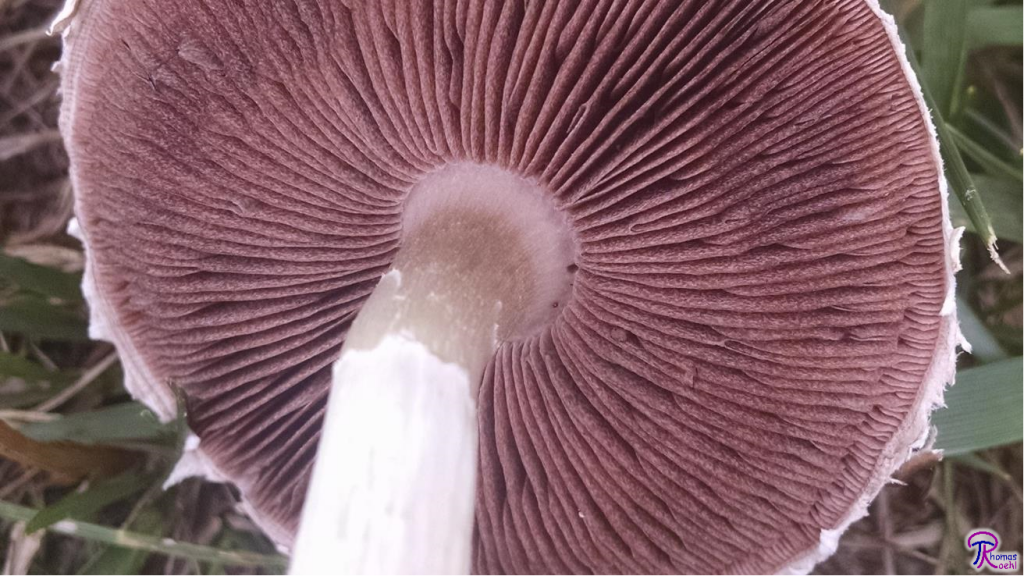
Agaricus mushrooms, such as this A. campestris, have chocolate-brown spores, free gills, and a partial veil. Here, the partial veil is visible as a small ring zone and as material on the cap margin.
Early on in mycology, most gilled mushrooms were placed in the genus Agaricus. Mycologists soon realized that gilled mushrooms were incredibly diverse and split the genus into numerous genera. Today, the mushrooms that remain in Agaricus are umbrella-like gilled mushrooms that have a chocolate-brown spore print, free gills, a partial veil, and a pileus that easily separates from the stipe.1,2
Description
In general, Agaricus mushrooms are medium-sized to large and display boring colors. Most species have caps that are shades of white and/or brown, though some spice things up with tones of yellow or red. The most common and familiar Agaricus species is A. bisporus, which is sold in grocery stores as “white button mushrooms,” “cremini mushrooms,” and “portabella mushrooms” (see FFF#002 for more on A. bisporus). A. bisporus is a very typical Agaricus and is probably the best example of what mushrooms in this genus should look like.
One of my biggest pet peeves in mycology is when identification of a mushroom hinges on a subjective characteristic, like color or smell. So although I don’t want to say it, one of the best ways to identify your mushroom as a species of Agaricus is to check the spore print color. Agaricus mushrooms produce a chocolate-brown to purple-brown spore print.2–4 For some reason, very few mushrooms outside Agaricus produce chocolate-brown spores. If your mushroom’s spore print is darker than purple-brown or is medium brown or lighter, you should probably check another section of your field guide.
Unfortunately, spore print color is not definitive. The range of colors produced by stropharioid mushrooms (FFF#185) overlap with the color range for Agaricus. The best way to tell these two groups apart is by looking at the gills. Strophariaceae mushrooms have attached gills, while Agaricus mushrooms have free gills.4
Gills in Agaricus species are usually free from the stipe, meaning that the gills approach the stipe but never quite touch it.2–4 Some species have gills that touch the stipe a bit, though not enough to be considered attached.2 Agaricus gills generally start pale but darken to chocolate-brown (the same color as the spores) by maturity.3,4 Many Agaricus mushrooms, such as the Meadow Mushroom (A. campestris), have light pink gills when young. Others have gills that are initially white or gray.4 The color change in the gills from pale to chocolate-brown is a classic feature of Agaricus. It is easiest to see the color change in the gills when you find a patch with mushrooms at different stages of development.
Another feature typical of Agaricus is the presence of a partial veil, which usually leaves a ring around the stipe.2–4 The partial veil is a membrane that protects the developing gills until the mushroom is ready to begin releasing spores. It extends from the edge of the pileus to the stipe. In the case of Agaricus, the partial veil connects near the top of the stipe.4 Most Agaricus species have thick partial veils and some even have ones composed of two layers. In mushrooms with double (two-layered) partial veils, the lower layer is visible as patches of extra tissue on the underside of the veil.3
Once the gills mature, the partial veil usually separates from the pileus margin and collapses to form a skirt-like ring around the stipe. In mushrooms with a thin partial veil, the veil remains are often harder to spot. In some of these mushrooms, the veil material stays attached to the pileus edge and separates from the stipe instead. In mature mushrooms, this looks like small tufts of material hanging down from the pileus margin. Sometimes, the veil disappears almost completely and leaves only a small “ring zone.”3 A ring zone is a thin area on the stipe where the partial veil connected. Microscopic pieces of the veil stick there and catch some of the spores falling down from above. In the case of Agaricus, this turns the ring zone brown and makes it visible.
One of the more unusual features of Agaricus mushrooms is that the stipe and pileus separate easily.2,3 If you bend the stipe to the side, it snaps cleanly at the top where it meets the pileus. In addition to being a useful diagnostic feature, this is handy for taking a spore print or preparing portabella mushrooms.
Agaricus mushrooms always fruit on the ground. The mushrooms are saprobic and appear in a variety of habitats, but they never grow on wood. Instead, they survive by decomposing other plant materials. Agaricus species can be found in forests, under certain trees, and in grasslands (the Meadow Mushroom is a common sight in lawns during the summer).2–4
Edibility
The genus Agaricus contains both edible and poisonous species. Although the genus is known for edibles like A. bisporus, it does contain poisonous mushrooms as well. A. xanthoderma, for example, causes gastrointestinal upset and is known as “The Sickener.” Poisonous Agaricus mushrooms tend to stain yellow or red and smell bad, though you shouldn’t rely solely on those characteristics because they are subjective and variable.3,4 If you want to eat Agaricus species, I suggest that you learn a few of the common, good edibles very well. There are a lot of look-alikes in the genus, so you should stick to the common ones that are easy to identify. The most popular wild Agaricus mushrooms are probably A. arvensis and A. campestris.
Of course, you should always cook your mushrooms before you eat them. Even uncooked A. bisporus mushrooms are known to contain the toxic compound monomethylhydrizine (see FFF#092).
Identifying Agaricus Species
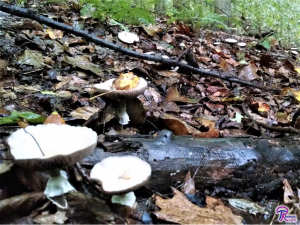
Agaricus species often form fairy circles. The fairy circle in this picture extends away from the camera to the top right corner.
Identifying Agaricus specimens down to species is sometimes frustrating. If you haven’t found one of the few species commonly treated in field guides, you’ll probably get stuck. To make matters worse, Agaricus is not very well-studied in North America.2,4 DNA studies in the future will likely shake up the North American species, so don’t be surprised if future keys for Agaricus get more complicated.
When you find an Agaricus, you should make note of all the normal things (colors, shapes, habitat, etc.) but also pay attention to bruising reactions and odor. To check for bruising, rub and/or cut the mushroom at the edge of the pileus, on the stipe, and at the base. Certain Agaricus mushrooms will bruise red or yellow, though it may take up to half an hour. Odor is another important factor in Agaricus identification. Try slicing or crushing tissue from the cap and base and then smelling it. Agaricus mushrooms may smell like phenol, bleach, almond, a few other scents, or nothing at all.2,3
Taxonomy
As I mentioned earlier, most gilled mushrooms were initially classified as species of Agaricus.1 Mycologists gradually whittled away at the list of Agaricus species and ended up with Agaricus as I described it above. Today, the type species for Agaricus is A. campestris.5 When taxonomists describe a new taxon, they select one species that exemplifies the organisms in that taxon and designate it the “type species” for that taxon. This means that the modern genus Agaricus must always contain its type species, A. campestris. If mycologists decide to split Agaricus again, the group containing A. campestris will keep the name Agaricus and the other group(s) will get a new name. This lends some stability to the genus by saying, “All mushrooms like A. campestris should be in the genus Agaricus.”
Agaricus is most closely related to the lepiotoid mushrooms (FFF#173), even though they have white spores.6 Spore print, although useful for identifying mushrooms, does not correlate well with taxonomic relationships.
| Kingdom | Fungi |
| Division | Basidiomycota |
| Subdivision | Agaricomycotina |
| Class | Agaricomycetes |
| Subclass | Agaricomycetidae |
| Order | Agaricales |
| Family | Agaricaceae |
| Genus | Agaricus L.5 |
This post describes a group of mushrooms and as such the information on this page (including the pictures) cannot be used to identify any mushroom in particular.
This post does not contain enough information to positively identify any mushroom. When collecting for the table, always use a local field guide to identify your mushrooms down to species. If you need a quality, free field guide to North American mushrooms, I recommend Michael Kuo’s MushroomExpert.com. Remember: when in doubt, throw it out!
See Further:
http://www.mushroomexpert.com/agaricus.html
http://www.svims.ca/council/Agari2.htm
Citations
- Pat O’Reilly. Pleurotus ostreatus (Jacq.) P. Kumm. – Oyster Mushroom. First Nature Available at: http://www.first-nature.com/fungi/pleurotus-ostreatus.php. (Accessed: 20th January 2017)
- Michael Kuo. The Genus Agaricus. MushroomExpert.Com (2007). Available at: http://www.mushroomexpert.com/agaricus.html. (Accessed: 19th January 2017)
- Laverne R. Chariton. Trial field key to the species of AGARICUS in the Pacific Northwest. Pacific Northwest Key Council (1997). Available at: http://www.svims.ca/council/Agari2.htm. (Accessed: 19th January 2017)
- Miller, O. K. & Miller, H. North American mushrooms: a field guide to edible and inedible fungi. (Falcon Guide, 2006).
- Agaricus. Mycobank Available at: http://www.mycobank.org/BioloMICS.aspx?TableKey=14682616000000067&Rec=31715&Fields=All. (Accessed: 19th January 2017)
- Vellinga, E. C., Sysouphanthong, P. & Hyde, K. D. The family Agaricaceae: phylogenies and two new white-spored genera. Mycologia 103, 494–509 (2011).

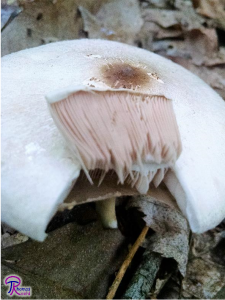
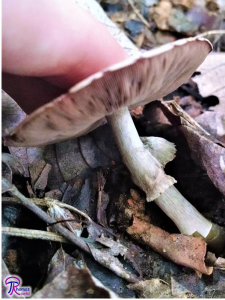
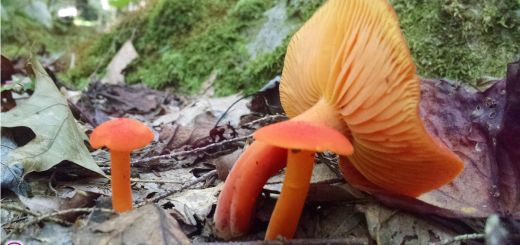
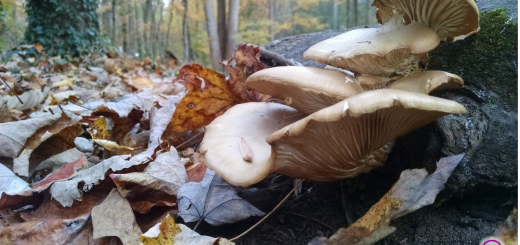
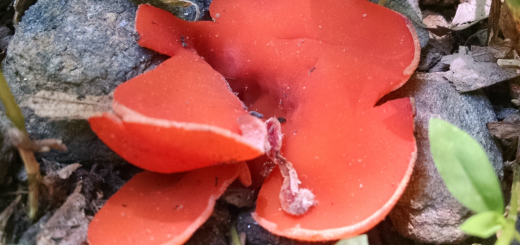





![#011: Characteristics of Kingdom Fungi [Archived]](https://www.fungusfactfriday.com/wp-content/themes/hueman/assets/front/img/thumb-small-empty.png)

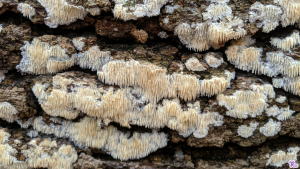
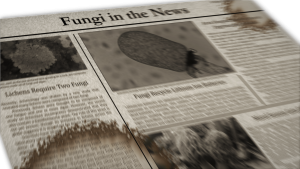
3 Responses
[…] to separate from other mushroom groups. The spore print color could also be found in Agaricus (FFF#174) or the stropharioid mushrooms. However, Agaricus produces stocky mushrooms with thick flesh, which […]
[…] (FFF#174) species, non-deliquescent coprinoid mushrooms (FFF#177), Bolbitaceae species, and cortinarioid […]
[…] Agaricus20 […]